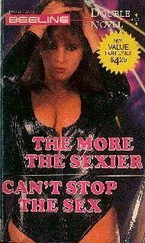If you want to determine whether you are reward-oriented, threat-oriented, or both, try asking yourself whether the following groups of statements are true of you.
If you are reward-oriented:
1. When I get something I want, I feel excited and energized.
2. When I want something, I usually go all out to get it.
3. When I see an opportunity for something I like, I get excited right away.
4. When good things happen to me, it affects me strongly.
5. I have very few fears compared to my friends.
If you are threat-oriented:
1. Criticism or scolding hurts me quite a bit.
2. I feel pretty worried or upset when I think or know somebody is angry at me.
3. If I think something unpleasant is going to happen, I usually get pretty “worked up.”
4. I feel worried when I think I have done poorly at something important.
5. I worry about making mistakes.
But I believe that another important explanation for introverts who love their work may come from a very different line of research by the influential psychologist Mihaly Csikszentmihalyi on the state of being he calls “flow.” Flow is an optimal state in which you feel totally engaged in an activity—whether long-distance swimming or songwriting, sumo wrestling or sex. In a state of flow, you’re neither bored nor anxious, and you don’t question your own adequacy. Hours pass without your noticing.
The key to flow is to pursue an activity for its own sake, not for the rewards it brings . Although flow does not depend on being an introvert or an extrovert, many of the flow experiences that Csikszentmihalyi writes about are solitary pursuits that have nothing to do with reward-seeking: reading, tending an orchard, solo ocean cruising. Flow often occurs, he writes, in conditions in which people “become independent of the social environment to the degree that they no longer respond exclusively in terms of its rewards and punishments. To achieve such autonomy, a person has to learn to provide rewards to herself.”
In a sense, Csikszentmihalyi transcends Aristotle; he is telling us that there are some activities that are not about approach or avoidance, but about something deeper: the fulfillment that comes from absorption in an activity outside yourself. “Psychological theories usually assume that we are motivated either by the need to eliminate an unpleasant condition like hunger or fear,” Csikszentmihalyi writes, “or by the expectation of some future reward such as money, status, or prestige.” But in flow, “a person could work around the clock for days on end, for no better reason than to keep on working.”
If you’re an introvert, find your flow by using your gifts. You have the power of persistence, the tenacity to solve complex problems, and the clear-sightedness to avoid pitfalls that trip others up. You enjoy relative freedom from the temptations of superficial prizes like money and status. Indeed, your biggest challenge may be to fully harness your strengths. You may be so busy trying to appear like a zestful, reward-sensitive extrovert that you undervalue your own talents, or feel underestimated by those around you. But when you’re focused on a project that you care about, you probably find that your energy is boundless.
So stay true to your own nature. If you like to do things in a slow and steady way, don’t let others make you feel as if you have to race. If you enjoy depth, don’t force yourself to seek breadth. If you prefer single-tasking to multitasking, stick to your guns. Being relatively unmoved by rewards gives you the incalculable power to go your own way. It’s up to you to use that independence to good effect.
Of course, that isn’t always easy. While writing this chapter, I corresponded with Jack Welch, the former chairman of General Electric. He had just published a BusinessWeek online column called “Release Your Inner Extrovert,” in which he called for introverts to act more extroverted on the job. I suggested that extroverts sometimes need to act more introverted, too, and shared with him some of the ideas you’ve just read about how Wall Street might have benefited from having more introverts at the helm. Welch was intrigued. But, he said, “the extroverts would argue that they never heard from the introverts.”
Welch makes a fair point. Introverts need to trust their gut and share their ideas as powerfully as they can. This does not mean aping extroverts; ideas can be shared quietly, they can be communicated in writing, they can be packaged into highly produced lectures, they can be advanced by allies. The trick for introverts is to honor their own styles instead of allowing themselves to be swept up by prevailing norms. The story of the lead-up to the Great Recession of 2008 is peppered, alas, with careful types who took inappropriate risks, like the former chief executive of Citigroup, Chuck Prince, a former lawyer who made risky loans into a falling market because, he said, “as long as the music is playing, you’ve got to get up and dance.”
“People who are initially cautious become more aggressive,” observes Boykin Curry of this phenomenon. “They say, ‘Hey, the more aggressive people are getting promoted and I’m not, so I’m going to be more aggressive too.’ ”
* * *
But stories of financial crises often contain subplots about people who famously (and profitably) saw them coming—and such tales tend to feature just the kinds of people who embrace FUD, or who like to close the blinds to their offices, insulate themselves from mass opinion and peer pressure, and focus in solitude. One of the few investors who managed to flourish during the crash of 2008 was Seth Klarman, president of a hedge fund called the Baupost Group. Klarman is known for consistently outperforming the market while steadfastly avoiding risk, and for keeping a significant percentage of his assets in cash. In the two years since the crash of 2008, when most investors were fleeing hedge funds in droves, Klarman almost doubled Baupost’s assets under management to $22 billion.
Klarman achieved this with an investment strategy based explicitly on FUD. “At Baupost, we are big fans of fear, and in investing, it is clearly better to be scared than sorry,” he once wrote in a letter to investors. Klarman is a “world-class worrier,” observes the New York Times , in a 2007 article called “Manager Frets Over the Market, But Still Outdoes It.” He owns a racehorse called “Read the Footnotes.”
During the years leading up to the 2008 crash, Klarman “was one of the few people to stick to a cautious and seemingly paranoid message,” says Boykin Curry. “When everyone else was celebrating, he was probably storing cans of tuna in his basement, to prepare for the end of civilization. Then, when everyone else panicked, he started buying. It’s not just analysis; it’s his emotional makeup. The same wiring that helps Seth find opportunities that no one else sees can make him seem aloof or blunt. If you’re the kind of person who frets every time the quarter is good, you may have trouble rising to the top of a corporate pyramid. Seth probably wouldn’t have made it as a sales manager. But he is one of the great investors of our time.”
Similarly, in his book on the run-up to the 2008 crash, The Big Short , Michael Lewis introduces three of the few people who were astute enough to forecast the coming disaster. One was a solitary hedge-fund manager named Michael Burry who describes himself as “happy in my own head” and who spent the years prior to the crash alone in his office in San Jose, California, combing through financial documents and developing his own contrarian views of market risk. The others were a pair of socially awkward investors named Charlie Ledley and Jamie Mai, whose entire investment strategy was based on FUD: they placed bets that had limited downside, but would pay off handsomely if dramatic but unexpected changes occurred in the market. It was not an investment strategy so much as a life philosophy—a belief that most situations were not as stable as they appeared to be.
Читать дальше
![Сьюзан Кейн Quiet [The Power of Introverts in a World That Can't Stop Talking] обложка книги](/books/33084/syuzan-kejn-quiet-the-power-of-introverts-in-a-wo-cover.webp)











